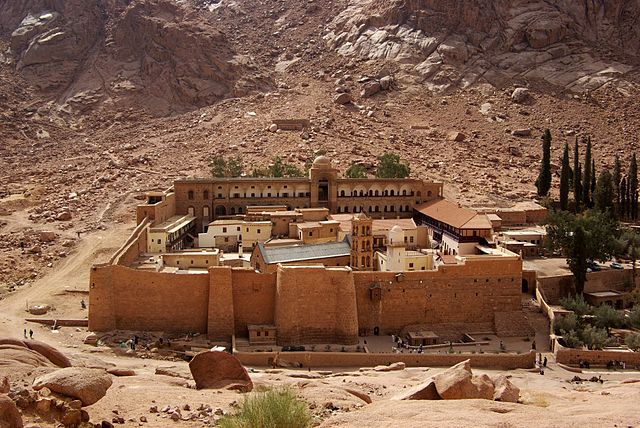Researchers discover hidden texts in ancient Christian manuscripts in Sinai monastery

A team of researchers have found ancient hidden writings in early Christian manuscripts that are currently housed in the world's oldest working monastery in Egypt.
According to the BBC, the scientists are using multi-spectral imaging to uncover the hidden texts beneath the visible texts of the manuscripts in the library of the St. Catherine's Monastery at Mount Sinai.
The ancient library, which was opened to the public in December 2017, is currently preparing to release online copies of its vast collection of liturgical texts, including some of the earliest Christian writings.
At least 170 of 4,500 manuscripts reportedly contained erased texts that can only be seen with the use of new imaging technology. Some of the erased information in the manuscripts include medical guides, obscure ancient languages and illuminating biblical revisions.
The manuscripts with the hidden texts were known as palimpsests - parchments containing neglected works that were recycled by monks when they were short on materials.
Michelle P. Brown, professor emerita of medieval manuscript studies at the University of London, believes that the texts provide clues about the interactions between the far West and the Middle East between the fifth and 12th centuries.
The manuscripts were initially discovered in 1975, but scholars only recently discovered the hidden texts in different layers with the use of light waves.
The same techniques have been used on the faded diaries of explorer David Livingstone and manuscripts in the Berlin State Library.
According to the BBC, one of the parchments once contained ancient Greek medical advice on how to treat scorpion bites. The hidden texts state that the bite can be treated with paste made out of a plant boiled in olive oil.
Other hidden writings highlighted the "incredibly complex interaction of different cultures" in the region during the dark ages, according to Brown.
The researchers found that some of the parchments contained traces of Greek, Latin and the languages of two Anglo-Saxon tribes before it was recycled by the monks.
Brown believes that the presence of Anglo-Saxon scholars in Sinai provides support for her hypothesis that Celtic sites in Ireland were partly influenced by Eastern monasticism.
Scientists from the Early Manuscripts Electronic Library are working to photograph the manuscripts to make them available online.
Damian Kasotakis, the chief camera operator for the Sinai Palimpsest Project, has estimated that 6,800 pages have been processed by the team so far.
The monastery where the manuscripts are kept was founded in 527 by the Byzantine Empire at the foot of Mount Sinai. It has been under the protection of the Bedouin Muslim community under a centuries-old edict that is still being upheld by the Egyptian government.











